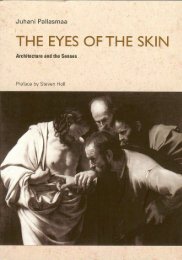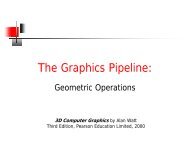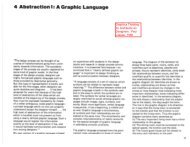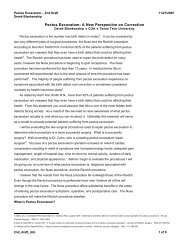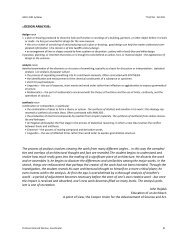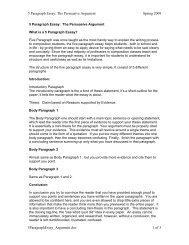SAMUEL Y. EDGERTONFigure 10figures were carved protruding from the surface of stone or plaster,arranged as if in lateral procession with their forms made visiblenot by painted colors but by the contrast between their lighted<strong>and</strong> shaded sides, <strong>and</strong> the actual shadows they cast against thebackground plane. Instead of simulating a ‘<strong>window</strong>’ view of deepspace beyond the pictorial surface, the ancient carvers created anequally ‘lifelike’ illusion of forward projection. This newarchaeological fascination, especially after the 1520’s, resulted in awidely popular ‘relief-like’ style of classical painting in central Italy(Hall, 1999). Artistic mastery of this novel mode nevertheless stilldepended on knowledge of basic Albertian <strong>perspective</strong> as appliedto the related optical geometry of shadow casting, the laws of whichhad likewise been enumerated by Alberti in his 1435/6 Treatise onPainting.Finally, fast-forwarding to seventeenth-century Florence, nearlytwo hundred years after Brunelleschi’s <strong>mirror</strong> <strong>and</strong> Alberti’s <strong>window</strong>had impressed their profound effects upon European art <strong>and</strong>162 História, Ciências, Saúde – Manguinhos, Rio de Janeiro
BRUNELLESCHI´S MIRROR, ALBERTI´S WINDOW, AND GALILEO´S `PERSPECTIVE TUBE´thought, we encounter Galileo Galilei (1564-1642), the greatastronomer <strong>and</strong> physicist. Not surprisingly, the birth of Galileo innearby Tuscan Pisa on February 15, 1564, just three days beforethe death of the great Michelangelo Buonaroti in Tuscan Florence,has given rise ever since to speculation that there must have beensome kind of occult connection between these two events(Bredekamp, 2000, p. 423-62). For indeed, Galileo, about to becomeas equally revered in science as Michelangelo in art, did seemmysteriously to have inherited a strain of that same artistic talent.Whether or not Galileo’s remarkable ability owed to the abovecoincidence, or just to the fact that for the past three centuriessuch talent seemed almost genetic in the Tuscan population, hisprofound underst<strong>and</strong>ing of linear-<strong>perspective</strong> drawing, calleddisegno in Italian, nonetheless helped mightily to open his eyes tonew revelations of nature that had escaped underst<strong>and</strong>ingeverywhere in the world since the beginning of the human race.Two years before Galileo’s birth, Giorgio Vasari (1511-74), the‘first art historian,’ had founded the Accademia del Disegno (Academyof Drawing) in Florence. This was intended to be an organizationwhere painters, sculptors, <strong>and</strong> architects could meet together notas mere artisan guild-members but as intellectuals, conversingabout current trends in philosophy, literature, <strong>and</strong> science. Vasariwanted to establish a center where artists could keep up to date ongeometry <strong>and</strong> anatomy, the sciences he believed essential to thepractice of the visual arts. Under geometry, he especially stressedthe study of both linear <strong>perspective</strong> <strong>and</strong> chiaroscuro, literally ‘lightdark,’the rendering of shades <strong>and</strong> shadows. The Academy shouldeven provide for a professional geometer to teach these subjects toless-prepared artist-members. In 1588, the 24-year-old Galileoconsidered himself sufficiently trained in the art-science of disegnoto apply for this position. While there is no record that he wasoffered the job, it was perhaps during this period that the aspiringyoung teacher began his lifelong friendship with the painterLodovico Cardi, called Cigoli (1559-1613), five years older <strong>and</strong>already a member. Cigoli lauded Galileo’s knowledge of geometry,even acknowledging that in <strong>perspective</strong> drawing, Galileo was his‘master’ (ibid.). Galileo’s increasing competence in this skill ledfinally, in 1613, to his own election to the prestigious Accademia.In 1612, Cigoli found himself embroiled in one of those endlessRenaissance debates over which was superior, painting or sculpture,<strong>and</strong> asked his friend for support. Galileo replied that painting issurely the superior art because it imitates what is visible but notimmediately tangible:The statue does not have its relief by virtue of being wide, long,<strong>and</strong> deep but by virtue of being light in some places <strong>and</strong> dark inv. 13 (suplemento), p. 151-79, outubro 2006 163





